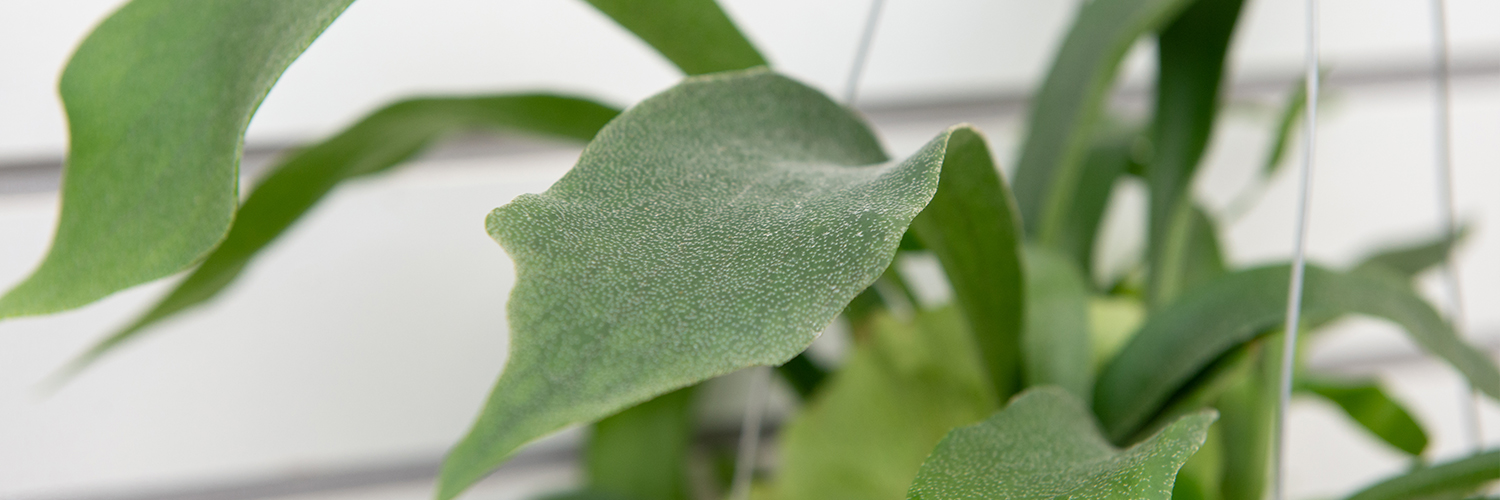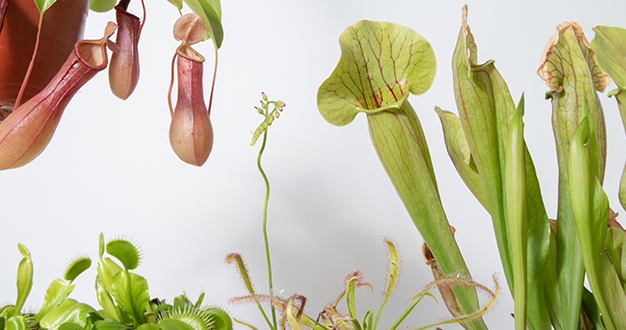
Few houseplants are as fascinating as a weird and wild-looking staghorn fern. With two completely different kinds of fronds, a shimmery silver cast, an epiphytic lifestyle, and an irregular growth habit, this plant is a definite stand-out addition in any collection. And if you like finding new ways to display your plants, it’s one you can get creative with too. Here, we introduce you to the intriguing staghorn fern – along with a few ways it can be displayed and some of our easy care tips too.
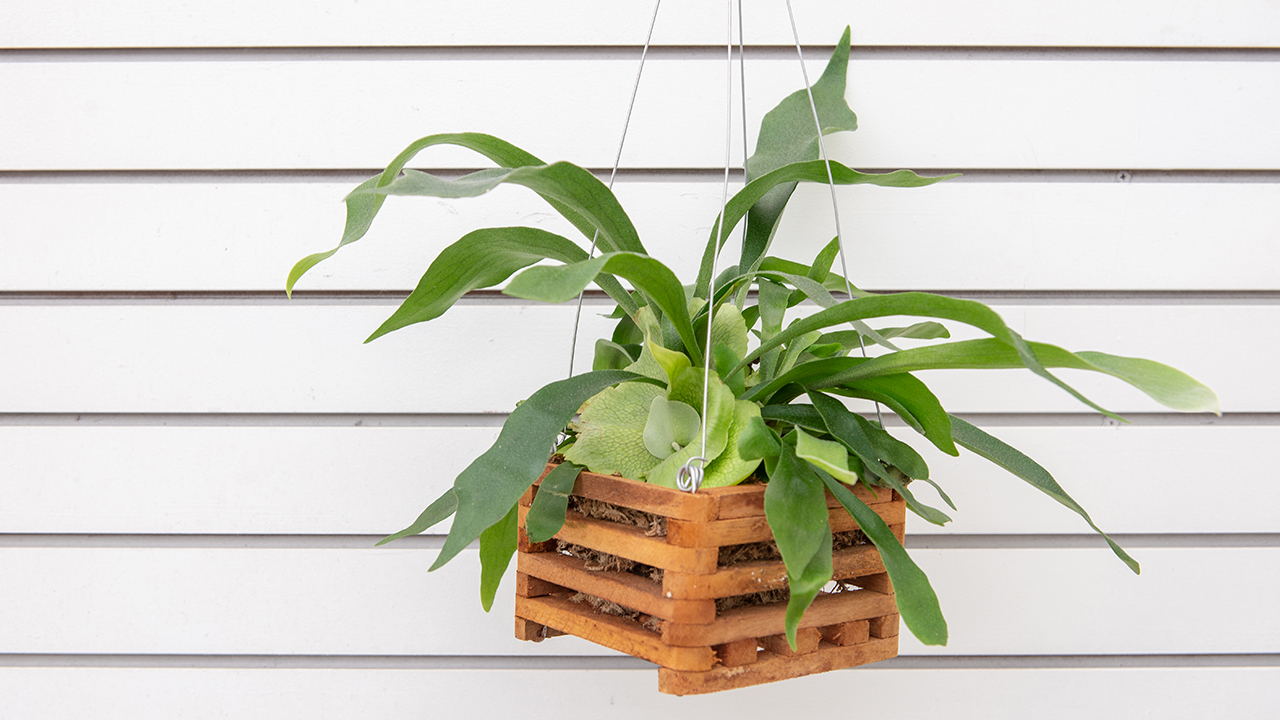
Meet the Staghorn Fern
A staghorn fern is one of almost 20 species of tropical ferns in the genus Platycerium. These unusual ferns live as epiphytes clinging to trees and even rocks in warm places such as Madagascar, Australia, and Southeast Asia. For houseplant enthusiasts, the most popular and easy-care species is Platycerium bifurcatum.

Two Unusual Fronds
Staghorn ferns sport two distinct types of fronds. The foliar frond is long, flat, and strap-like. This green frond may be upright, arching, or pendulous and features a lobed, antler-like end that gives the plant its common name. Foliar fronds produce spores on their undersides, making them the fertile portion of the fern. They also collect rainwater and organic debris that breaks down into nutrients the plant can use.
At the base of the plant, you’ll find the basal fronds – a group of brown, overlapping plates that protect the root system and help the epiphytic fern stick to its growing surface. Both foliar and basal fronds are covered in tiny, star-shaped hairs that protect the plant from insect damage, conserve moisture, and give the staghorn its characteristic silvery appearance.
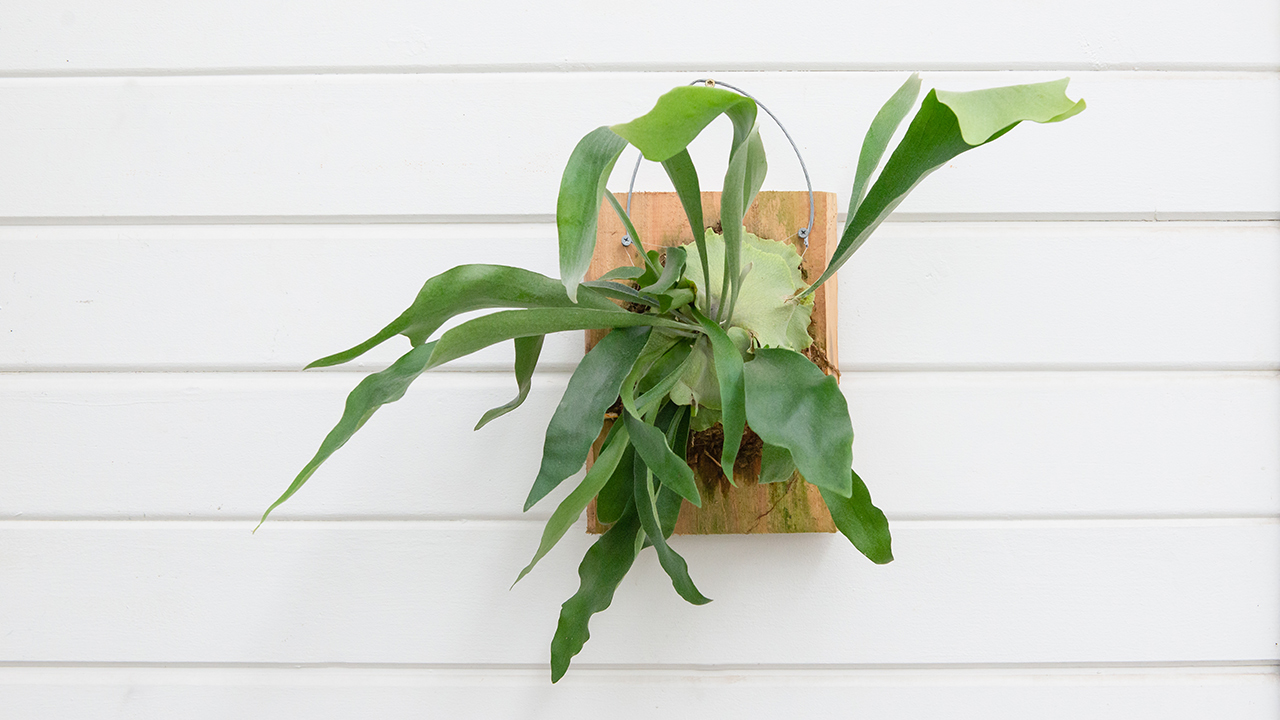
Creative Displays
As it grows, a staghorn can get big – with its foliar fronds growing outward in unpredictable directions. Its epiphytic lifestyle makes it amenable to several creative options for showing off this unique structure and growth pattern.
For example, a staghorn can be tied to a wooden plank using jute string or fishing line. Hang it flat against a wall and you have a living, three-dimensional, botanical portrait.
A staghorn is fascinating to grow in a moss-lined wire hanging basket too. As the plant develops, it pokes out new offshoots from all sides of the basket, eventually forming a big and attention-grabbing ball of fern. You can also find staghorn ferns in small wooden hanging baskets in our Greenhouse collection now too.
Or, you might try your hand at the Japanese art of kokedama. With this type of display, the plant’s roots are encased in a ball of soil, which is then wrapped in green moss and secured with fishing line, jute, or waxed string. You can then suspend your kokedama staghorn by the string or set it in a shallow dish for the table top.
Staghorn ferns can grow in pots like regular houseplants too. But with all those adventurous fronds going in different directions, pots are most often used for small staghorns – before they’ve grown very big.
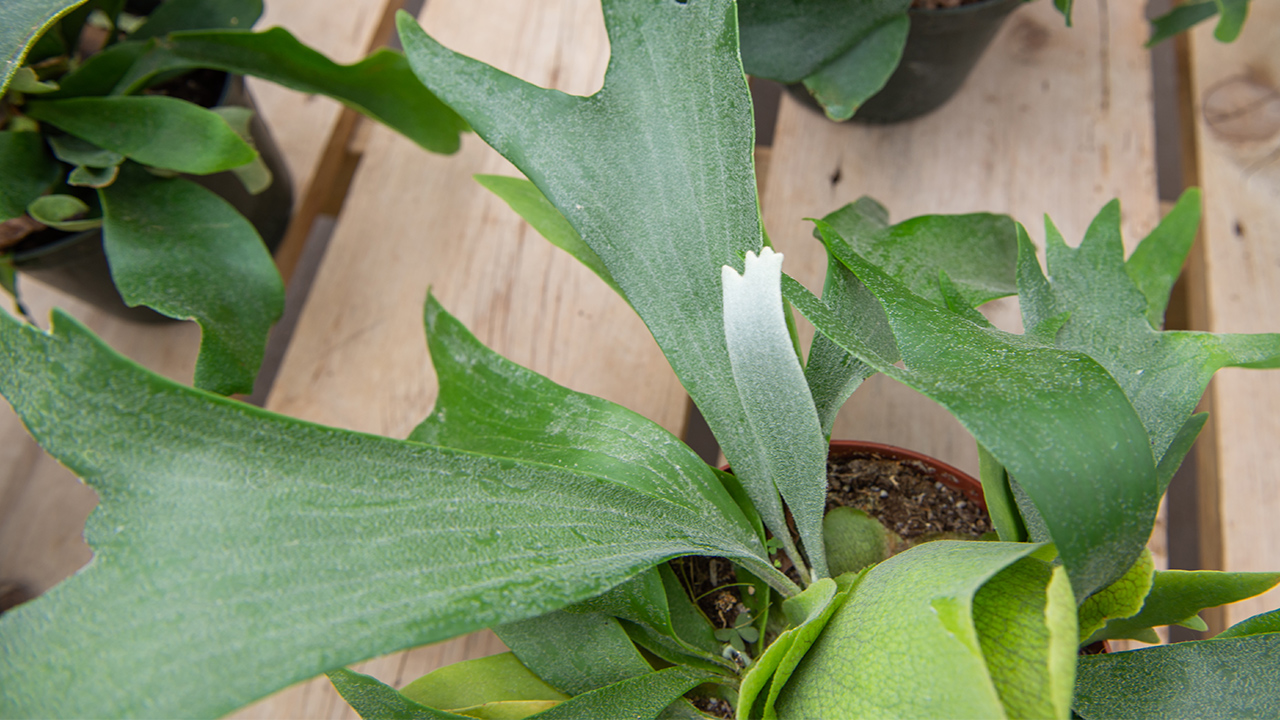
Care and Feeding
Taking care of a staghorn fern is easier than it might look. To start, they do best in bright, indirect light – like most of our indoor houseplants. They even tolerate low light spaces for long periods of time, but they’ll grow pretty slowly there.
For water, staghorns like it best when you mimic the conditions they’re used to as epiphytes – periodic soaking rains that drain away quickly with dry periods in-between. Before you water, let the soil medium dry quite a bit – you may have to check the soil under the basal fronds to be sure. When it’s time, soak the entire plank, wire basket, or kokedama – or the soil if it’s in a pot – and allow it to drain completely. Overwatering is harmful to staghorns though – as is letting water sit anywhere on the plant. So, when in doubt, let the plant tell you it’s thirsty by drooping just a little before you give it a drink.
And if you want your staghorn to put on lots of new growth, add a monthly dose of a balanced plant fertilizer to its water during the growing season.
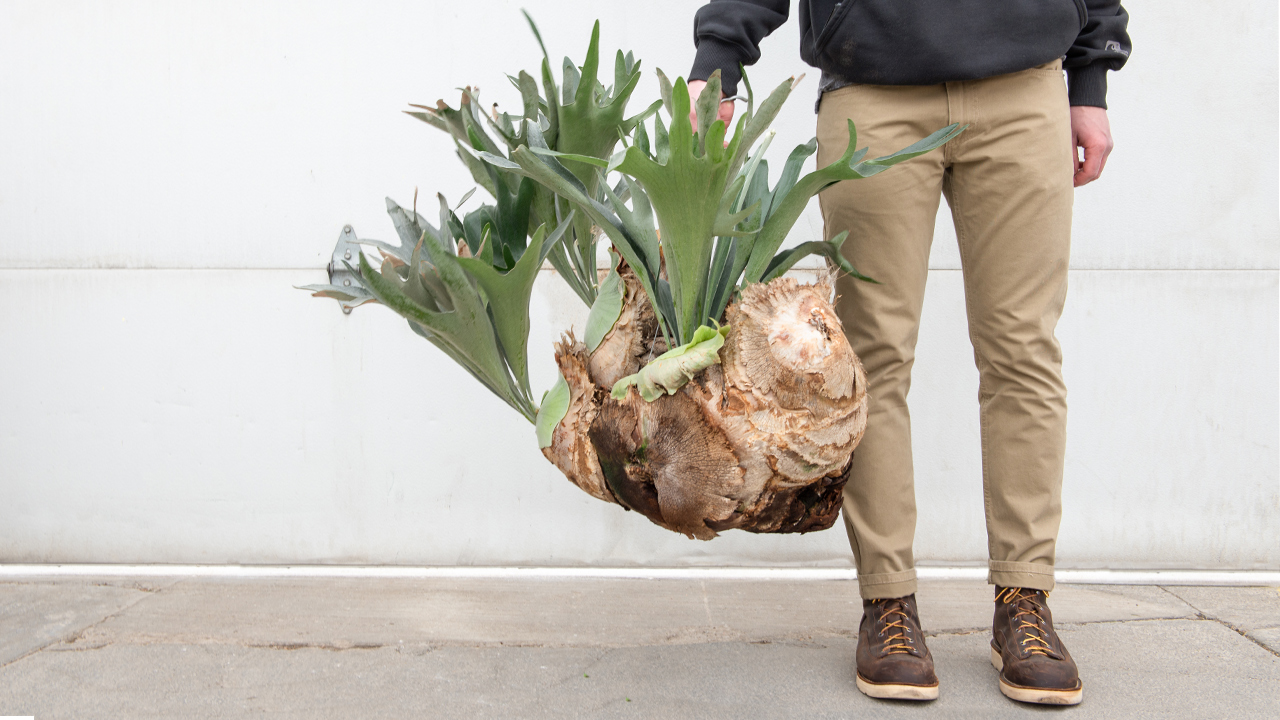
A Fern Like No Other
Staghorn ferns may seem mysterious but they’re no more difficult to care for than most any other houseplant – and their fascinating features bring a show-stopping focal point to any collection. Stop by the Greenhouse to see for yourself – and if you have any questions, just ask. We’re always here to help.

